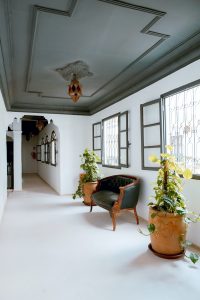In terms of the interiors of a room, ceilings are a sizable uninterrupted aspect that surrounds us. Despite their large coverage area and the fact they have a massive impact on the ambience within a room, we often fail to mention them when discussing a building’s space. When looking at the materials that are used for ceilings, it’s important that they match the purpose of the room, as well as the other materials used for the overall build. For example, if timber battens have been used, then a timber batten ceiling would make a complimentary choice. There are a number of popular materials that you can choose from for your ceiling, with the popular choices being wood, metal, tile drywall and plaster.
Plaster

Plaster is a versatile material which can be installed over different substances such as wood stone or brick. Plaster and lath were popular among the 1930s and 40s for both ceilings and walls. Plaster and lath can be easily stencilled and moulded into patterns and shapes. Plaster can often be textured which assists with managing the sound reverberations within the room.
Wood and beams
A timber ceiling can add drama, interest and warmth to a room. You can use tongue and groove planks or opt for wood beams running across the ceiling. Some architects decide to leave structural wood beams exposed as it provides a nice effect. Decorated and exposed beams give the space a feel of permanence and solidity. Plaster and drywall ceilings can also have the wood beams added if it is practical to do so.
Drywall
Drywall ceilings are fastened to the joists in the ceiling where the joints are then taped and mudded so they cannot be seen. If you decide to leave your ceiling with a smooth finish it can sometimes result in echoey sounds, this can often be a reason people choose textured drywall as it can deaden the sound. The natural textures used are orange peel, splatter and popcorn.
Tile
Mineral fibre ceiling tiles are suspended within a metal frame that is most often used in commercial buildings. The same system can be used in private homes, but more commonly it’s found in basements to cover wiring and plumbing, or to lower the ceilings. This type of ceiling material can be attached directly to the furring strips, joists and other materials like drywall.
Metal
Stamped metal is very decorative and offers a historical look. This type of ceiling was popularized within the US after the civil war. Stamped metal is easy to install and durable with a three-dimensional pattern that can be left raw or painted. Brass, copper chrome and tin finishes are the most popular.
Corrugated Tin
Did you know you can even use a roofing material for your ceilings? For a real rustic aesthetic, you could opt to reuse corrugated tin as your ceiling material. It goes well with wooden walls and floorboards for an outdoor shed feel. Raw wood and tin go well together to create a rustic barn theme or even an industrial theme.
PVC tiles
PVC tiles come in many different finishes and are lightweight. You can achieve the look of a stone ceiling, tin, or marble with the use of PVC tiles. As this is a low cost material and readily available, this type of tile material is well suited for those being budget-friendly.
Moulding
Have you got plain flat ceilings? Are you bored of the same look but don’t want to change it extensively? You could try adding some texture just by using moulding. Moulding can be arranged into different patterns, and it can also be matched to your doors.
There are many options for the different types of materials that you can use for your ceiling construction and finish. The hard part will be choosing which one you like best that suits your design, budget, and building requirements!



